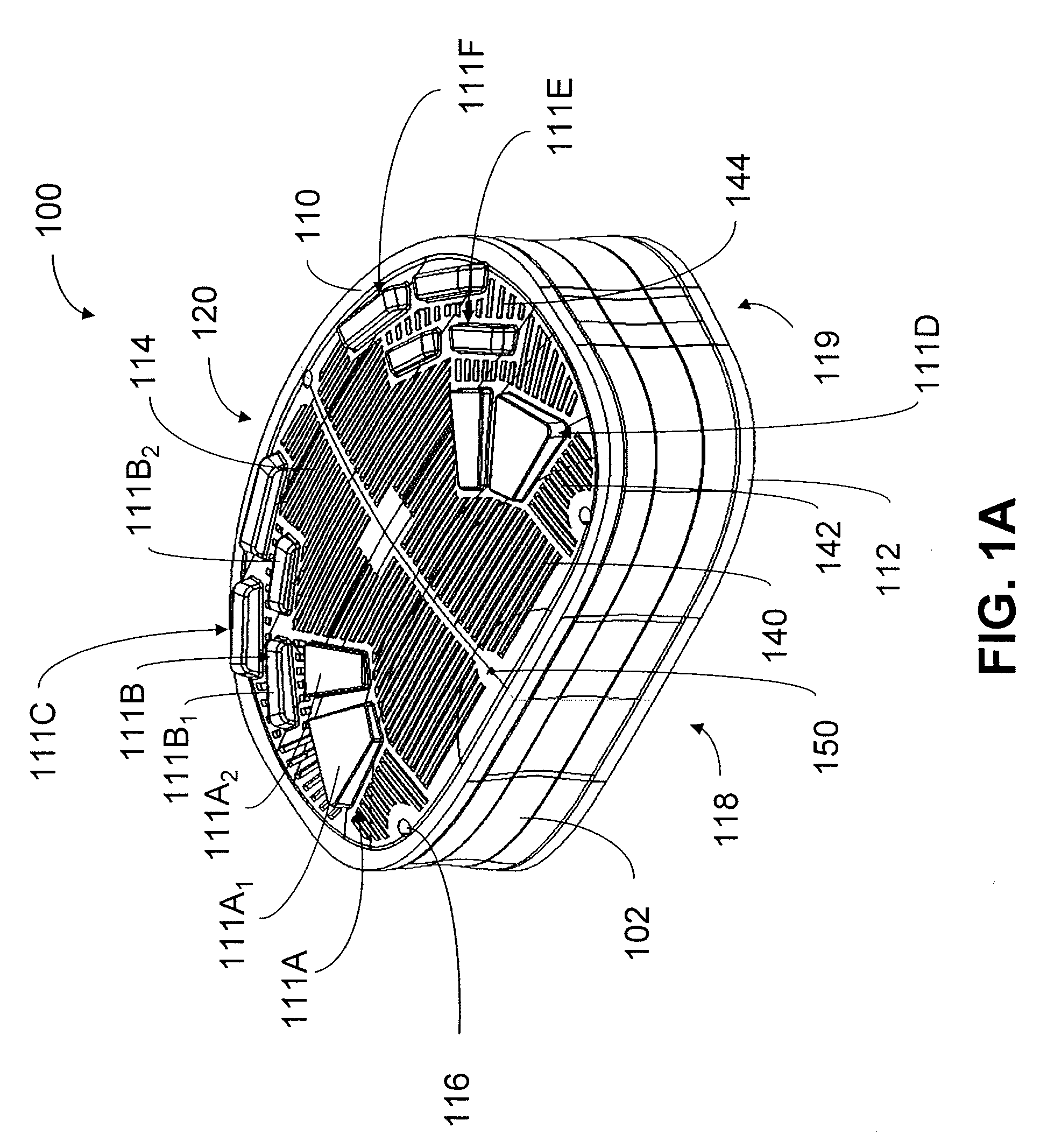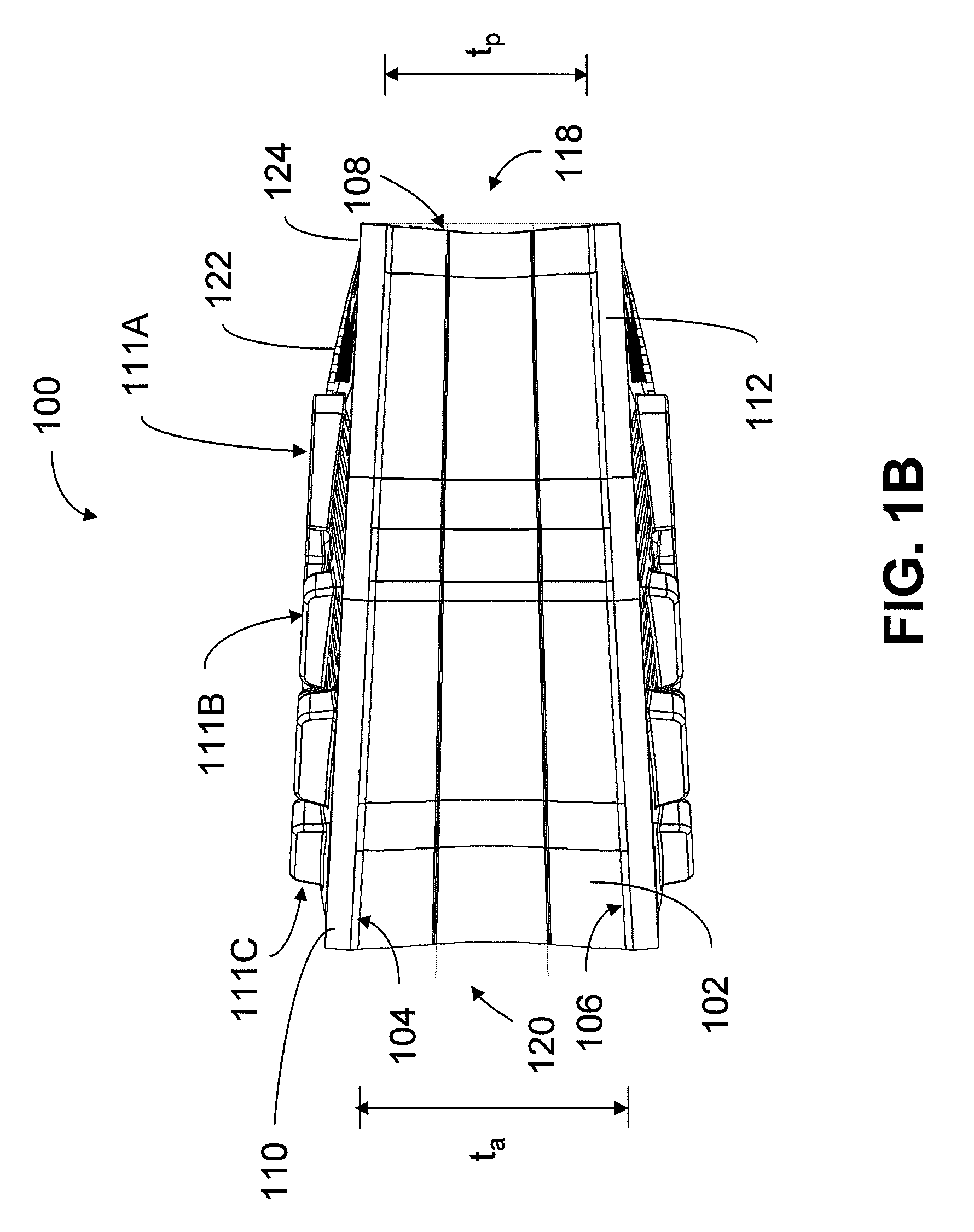Artificial spinal disc implant
a technology of spinal disc and implant, which is applied in the field of artificial spinal disc implants, can solve the problems of limiting the ability of the nucleus, affecting the function of the spinal disc,
- Summary
- Abstract
- Description
- Claims
- Application Information
AI Technical Summary
Benefits of technology
Problems solved by technology
Method used
Image
Examples
Embodiment Construction
[0023]An artificial spinal disc implant is provided that may be implanted between adjacent vertebrae in the spine to replace, repair or augment a natural spinal disc. The spinal disc implant may be characterized by one or more biomechanical properties that approximate those of a natural spinal disc. The implant is also designed to be sufficiently secured to the vertebrae so that it may function in the body for long time periods.
[0024]The disc implant may include one or more end plates. The end plates may have an outer surface that includes fixation elements that are designed to fit into corresponding features (e.g., recesses) on the vertebrae to secure the disc between the vertebrae. The fixation elements may be arranged and configured to provide a greater resistance to forces that act to dislodge the disc from its position between the vertebrae. For example, the fixation elements may be designed to have certain preferred dimensions and / or may be positioned in certain preferred arra...
PUM
 Login to View More
Login to View More Abstract
Description
Claims
Application Information
 Login to View More
Login to View More - R&D
- Intellectual Property
- Life Sciences
- Materials
- Tech Scout
- Unparalleled Data Quality
- Higher Quality Content
- 60% Fewer Hallucinations
Browse by: Latest US Patents, China's latest patents, Technical Efficacy Thesaurus, Application Domain, Technology Topic, Popular Technical Reports.
© 2025 PatSnap. All rights reserved.Legal|Privacy policy|Modern Slavery Act Transparency Statement|Sitemap|About US| Contact US: help@patsnap.com



